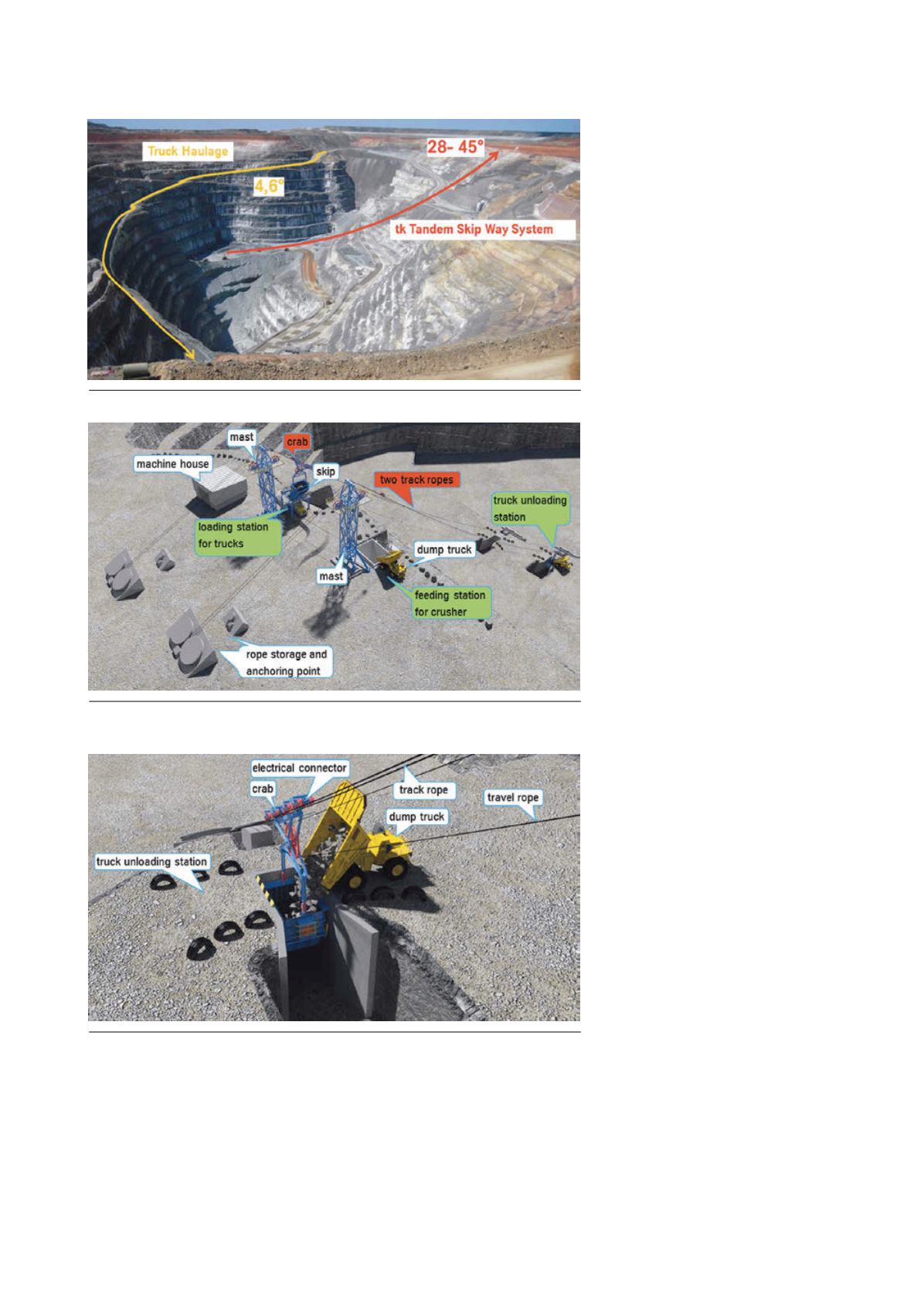
impact the sustainability and
profitability of existing opencast mines.
The thyssenkrupp (tk) SkipWay
System is based on the technology of
cable crane systems, which are used in
the construction of large dams and are
also part of the wide product range
offered by thyssenkrupp. At two truck
unloading stations at the bottom of the
mine (Figures 2 and 3), skips running in
opposite directions are charged with
uncrushed material by dump trucks. The
skips are fitted with wear plates and slide
rails and are suspended in a
vibration‑dampening support frame and
carriage assemblies from two parallel
track ropes in each direction. The full
locked ropes are anchored in the ground
near the bottom station and span the
entire slope of the mine up to the skip
unloading station at the top without any
intermediate supports. At the top of the
mine, the ropes are led over a mast and
anchored either in the ground or in a
counterslope. The run of the ropes from
the bottom station to the top station is
determined by the position of the
unloading station near the edge of the
mine, the deadweights of the ropes, the
rope tension and resultant sag, and
additionally by the upward or
downward running skips. Rope tension
is set so that both laden and empty skips
maintain a safe distance from the mine
slope and any roads leading into or out of
the mine.
The two parallel rope anchor stations
at the rear of the skip unloading stations
serve as tensioning and storage systems
for additional rope lengths should the
bottom station be relocated as mining
progresses.
The use of two parallel track ropes in
each direction allows the use of
standardised – still common – full
locked ropes. Two track ropes result in a
shorter skip carriage as the number of
running wheels needed to distribute
loads is divided over two ropes.
Polyamide running wheels, already
proven in cable cranes, are used to
reduce wheel-rope contact pressure and
maximise rope life.
The Skip Way System offers several
options for skip unloading at the top
station. Valuable ore or minerals can be
transported on one rope system so that
automated skip discharge takes place in
this part of the conveying system above
a crusher. Once the locking mechanism
opens, the entire skip load of uncrushed
ore or mineral slides into the crusher bin.
After crushing and possibly screening,
the rawmaterial is transported out of
the mine area via a conventional belt
system for further processing or, for
example, to a cement plant.
The second rope track of the SkipWay
System can be used, for example, to
transport uncrushed overburden, which
is loaded from the skip back onto mine
trucks at the top station. The trucks can
Figure 1. Alternative ore/mineral and overburden haulage in opencast mines and quarries.
Figure 2. Overview of a tandem Skip Way System with truck-to-truck and truck-to-crusher
options.
Figure 3. Truck unloading/skip loading station at bottom of mine.
34
|
World Coal
|
March 2016


